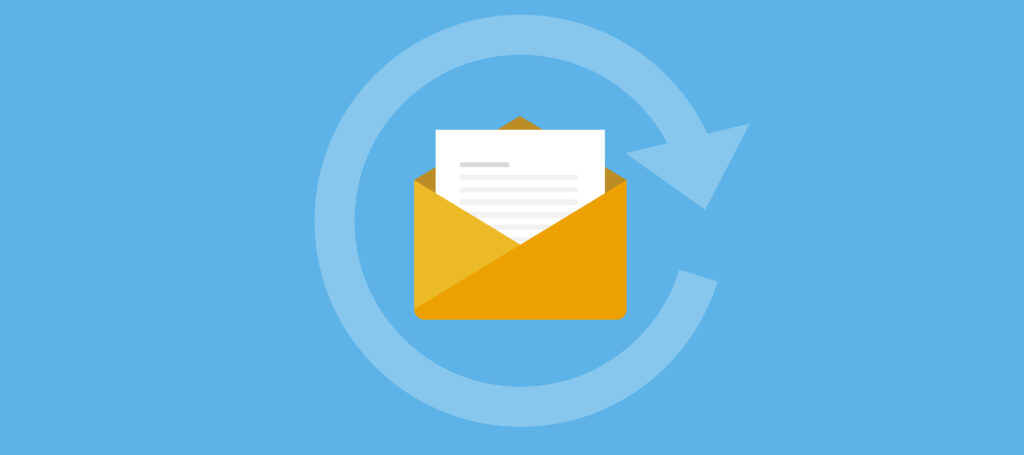Email marketing is an incredibly popular channel for audience engagement. According to Hubspot’s 2023 Media Content Planning Report, nearly 50% of companies plan to use email marketing this year, beating out all other channels in popularity. Many content teams are just starting to get into email, with 22% of survey responses saying they will leverage it for the first time this year.
Unsurprisingly, so many companies want to implement email marketing campaigns. Most people check their email messages daily, and 19% of people read emails as soon as they hit their inbox. Email marketing is an affordable way to instantly reach hundreds of potential customers, which is why it has the third-highest ROI of any channel.
However, running an email marketing campaign doesn’t guarantee success. You must also be strategic in who you send emails to and the content you include. Use this guide to improve your email game or successfully launch a campaign for the first time. You can elevate your dealership marketing and better connect with customers.

Why Email Marketing is Effective for Car Dealerships
There are several reasons why email marketing is an effective promotional option. First, almost everyone has an email address. Around 90% of Americans use email, with more than 95% of Americans ages 25-44 having an email address.
This percentage completely overshadows social media usage, considering only 69% of Americans use Facebook and only 40% use Instagram. (Video marketing is the most competitive option, with 81% of Americans watching YouTube regularly.)
Car dealerships, in particular, can benefit from email because of their marketing goals. Email can be a powerful tool for driving people to your website and into your business. The second someone drives away from your dealership, and your main goal is to bring them back. Email marketing can help achieve that.
While email marketing is effective, it isn’t as easy to develop as other channels like search engine marketing (SEM) and discovery advertising. It takes time to build your list, segment your users, and create compelling content. Here are six keys to developing an effective marketing campaign to impress your customers.
1. Build Your Email List
The first step to developing any email marketing campaign is to grow your email list. Unlike pay-per-click (PPC) or display advertising, your audience has to actively subscribe to your email list. You cannot purchase or continue sending customer emails after a recipient unsubscribes. Check out the CAN-SPAM Act for complete FTC guidelines regarding email marketing.
So where do these emails come from? The good news is that you likely already have an extensive list within your system. These are customers who have purchased cars from your dealership before or who schedule maintenance services out of your garage.
There are additional ways to build your email list with active subscribers. These include:
- Marketing your email newsletter on your website and social media channels
- Offering promotions to people who subscribe to your email newsletter
- Promoting your emails at events you attend
- Asking people to subscribe to your emails when they purchase from you
One common mistake companies make is wanting and keeping a large email list. This isn’t nearly as important as having an active one. Make sure you have a process for removing spam emails and reducing the number of emails you send to customers who don’t open them. Many email services charge by the number of emails sent, so you can save money by only reaching out to active, engaged subscribers.
2. Include the Elements of an Outstanding Newsletter
Once you are ready to start developing email messages, you can create templates to update and fill in with each new promotion, event, and message. This will save your team time while allowing you to identify which emails perform best for your organization. Make sure each email you create has the following elements:
- An engaging subject line: If you can’t make your audience care about your email message, all of your design efforts will go to waste.
- An interesting hook: Don’t just send the same message. Tell people why each email is special and unique.
- Engaging visuals: Connect with customers before they start reading with professional photos and graphics.
- Relevant information: make your audience care about your messaging by pairing different segments with news they care about.
- A call to action: tell customers what to do with the information you share.
Approach your email marketing strategies with a journalist’s eye. Answer the who, where, what, why, when, and how when you are sending out information. This will prevent confusion and give customers all the information they need to take action.
If you aren’t sure whether your newsletters have these elements, consider A/B testing two different designs. Many email software tools have this option. You can pit two subject lines against each other to see which ones generate more opens and click-throughs.
3. Segment Your Audience
There are two ways to market to your customers: mass messaging information and targeted segmentation. Social media advertising is a good example of mass messaging. If you create a post on your page, everyone who follows you can see it. Paid search advertising provides an example of segmentation, as customers only see ads relevant to their search terms.
Customer segmentation means you send fewer emails but distribute more relevant content to your email lists. It is a way to dispel vanity metrics and instead focus on data points that meaningfully reflect your success. Here’s what this looks like in action:
- Bad: our dealership sent messages to 2,000 people this month.
- Good: our dealership emailed 50 customers about a maintenance deal, and 10 have called to request service appointments since.
Successful email marketing doesn’t mean reaching countless people and sending dozens of emails. It involves developing strategies to reach the right people.
For example, let’s say you add a customer to your email list after they buy a new car. If you send them weekly emails to buy new vehicles on your lot, they will unsubscribe. They don’t need a new car; they just bought one. However, if you add them to a schedule that sends maintenance alerts and sends them service deals, the customer will be more inclined to open, read, and click through the content.
There are multiple ways to segment your email channels. Some companies segment by demographics, while others look for specific customer traits. Evaluate your customer journey and develop relevant email updates based on the needs of your audience.
4. Take Advantage of Autoresponders
One of the challenges of email segmentation is that it requires you to send more emails to smaller groups of people. This can be overwhelming to your content and design teams. Fortunately, tools are available to reduce your creation and scheduling workloads, so you don’t have to reinvent the wheel with every email you send.
Autoresponders follow a series of rules and trigger when specific criteria are met. For example, let’s say you offer a birthday gift to customers as a thank-you for their support. You only need to design and schedule one birthday email based on the customer information you upload to the email system. This email will get sent out to different customers each day of the year and will require minimum attention from your team.
Evaluate your customer journey and the needs of your target audience to determine which autoresponder emails you can develop. These might include oil change reminders, service notifications, and signs that it is time to upgrade from older models. You can also create emails that trigger a few days after a service appointment asking customers to leave reviews, thus growing your digital footprint.
Be sure to track how many customers and leads are generated from these autoresponders to see how effective they are throughout the year.

5. Develop Event Emails
Email marketing is not a stand-alone tool. As you grow your promotional efforts, you will notice that each channel supports the others differently. For example, your dealership can develop special events to bring customers to your showroom. Then, your email marketing campaigns can promote these events so more customers know them. The cycle continues because the new customers you meet at these events will join your email list.
A major part of developing marketing campaigns is tracking their success. Consider training your staff to ask how customers heard about the dealership or special events. You can also add this information to your surveys. This can tell you if your email campaigns are effective at bringing customers to your dealership.
Another way to know whether customers are engaged in your email messages is to create special promotions for them. These can include email-exclusive deals and even promotion codes that only email recipients can access.
6. Maintain Consistency
One final factor to consider in your email marketing is consistency, which is your dealership’s ability to keep to a content schedule and send regular emails to customers. There are multiple reasons why consistency is important in email. One of the worst things you can do is develop in-depth campaigns and suddenly forget about them because of other tasks. Here are a few reasons to keep going:
- You can keep moving leads down the sales funnel. Giving up on email marketing can cause you to lose leads and miss out on the sales you were working toward.
- Your customers will keep your name top-of-mind. Email marketing gives you an edge over your competition by keeping your name in the inboxes of leads and customers.
- You can support your other marketing efforts. Your SEO and other digital marketing efforts could get a boost from the traffic you drive from your email campaigns.
In short, inconsistent email marketing is a waste of resources. Too often, companies collect hundreds of email addresses and don’t have the resources to market to them. These can quickly become dead leads.
You can maintain consistency by setting realistic goals for your email marketing efforts and budget. Not everyone has the bandwidth to send daily emails. Your campaigns might be more effective if you send weekly notifications to customers while utilizing autoresponders.
Out-Smart, Don’t Out-Spend on Email Marketing
It’s easy to mass-message your email list with campaigns and deals that aren’t necessarily relevant to your customers. While you might generate some sales with this content, your email efforts will consistently underperform.
Work with a team that can take a strategic approach to email marketing. You might send fewer emails, but the content will be more relevant and your engagement will reflect that. This is what it means to build a smarter email marketing strategy — one that can significantly impact your ROI. Learn more about the services offered at J&L Marketing and how we help car dealerships grow their sales without going over budget.



